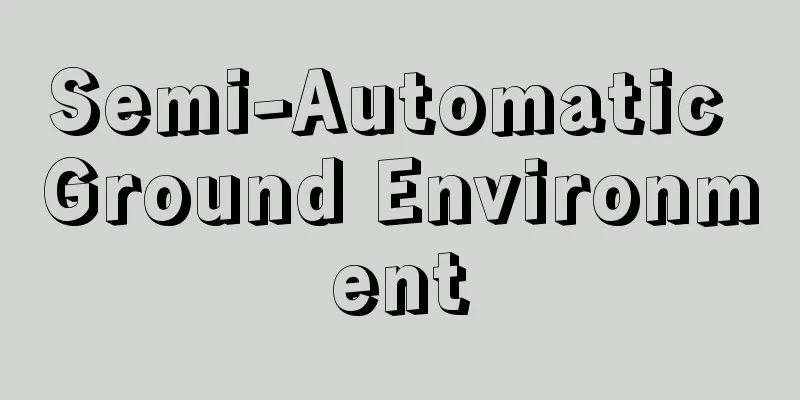Plateau - Kougen (English spelling)

|
This refers to a flat terrain at high altitudes, consisting of a continuously spreading flat surface, a surface with small undulations, or a surface with small steps. Looking at the world, the areas where this terrain is distributed are generally at altitudes of 2000 meters or more, and many of them have deep canyons cutting into them. Therefore, transportation on the plateau is often restricted by these canyons. The world's plateaus are divided into three types based on their morphological characteristics and their positional relationship to the surrounding terrain: table plateaus, mountain plateaus, and foothill plateaus. (1) A table plateau, also called a continental plateau, is a plateau that is located at a relatively higher elevation than the surrounding land surface and spreads out like a table. Examples include the plateaus of Abyssinia (Ethiopia), Arabia, Brazil, Iberia (southwestern tip of Europe), and Labrador (Canada). (2) Intermontane plateaus are surrounded by mountain ranges. Typical examples are the plateaus of Mongolia, Tibet, and Iran, as well as Colombia (USA), Mexico, Anahuac (Mexico), and the Altiplano (Bolivia). The Altiplano has an elevation of 4,000 to 5,000 meters, a length of about 800 kilometers, and stretches from southeastern Peru to the borders of Bolivia and Argentina. With a maximum width of about 180 kilometers and an area of about 100,000 square kilometers, this plateau includes the Uyuni and Atacama basins, which lie between the eastern and western Cordillera mountain ranges, as well as the Atacama highlands. (3) Submontane plateaus are located at the foot of mountain ranges, such as the Colorado Plateau (USA) and the Patagonia Plateau (near the southern border of Chile and Argentina). [Takuma Arii] CauseThe formation process of a plateau can be inferred from the geological structures seen in the canyon walls that incised it. The strata of a plateau can be composed of sedimentary rocks and lava. In the former case, outcrops are observed in which new strata are successively covered from the bottom to the top of the valley walls, and in some parts small folding structures, fault displacements, and unconformities can be seen. However, as a whole, the strata lie almost horizontally. This fact shows that the crust over a wide area, including the plateau, was subjected to land-building movements over a long geological period, and was uplifted uniformly, leaving the plateau surface, and deep canyons were formed by continuous incision. The presence of unconformity surfaces can also be used to infer a period of stagnation in uplift. The Colorado Plateau and the Colorado Canyon that incises it are examples of this type of plateau. Examples of the latter type of plateau composed of lava include the Columbia Plateau (approximately 160,000 square kilometers) in the United States and the Deccan Plateau (approximately 400,000 square kilometers) in India. The first lava flows on the Columbia Plateau occurred about 50 million years ago, and the Snake River today cuts the plateau to a depth of about 1,600 meters. Ice sheets during the Cenozoic Pleistocene glacial periods pushed the Columbia River south and east of its present course, near the cliffs of the dry valley now known as Dry Falls. Many of the world's great plateaus are high in altitude and highly isolated, with few being blessed with good climates and water resources. Land use on plateaus varies. In the United States, Grand Canyon National Park (Colorado Plateau) is a tourist destination, while Hoover Dam (Colorado River) and Grand Coulee Dam (Columbia River) are used as multipurpose dams. In some places, such as the Iberian Plateau, agricultural land use and mineral resource mining are carried out. On the other hand, there are places where land use is not advanced, such as the Labrador Plateau, where extensive livestock farming is practiced, and the Tibetan Plateau, where yaks are grazed on land at altitudes of over 3,000 meters. In Japan, there are the Kibi Plateau in the Chugoku region and the Mikawa Plateau in Aichi Prefecture, which are classified as foothill plateaus. However, compared to the foreign landforms discussed so far, they are unique in a number of respects, including low elevations, steep slopes, and small areas. [Takuma Arii] Plateau CreaturesThere are several types of plateau vegetation, but in Japan there is one that mainly develops at the foot of volcanoes, and another that is not as high as a mountain and has a relatively flat table-like topography. In Japan, this corresponds to altitudes from the cool temperate zone to the lower subalpine zone, but the vegetation varies depending on the condition of the substrate, with Japanese red pine forests on lava flows and pampas grasslands, bamboo grasslands, larch forests, and deciduous broadleaf forests such as Japanese oak and maple trees on gravelly sites. All of this vegetation is the result of human influences such as burning, mowing, and grazing. Frequent burning results in fire-resistant communities such as oak forests, while extensive grazing results in communities that are not eaten by livestock such as Rhododendron communes. Because of the cool, flat topography, drainage is poor, and many areas are wet grasslands. [Masahiko Osawa] Many different animals live on plateaus, but most vertebrates generally live in forest zones. Mammals include hares, deer, foxes, mice, squirrels, and moles. Birds include the Japanese bush warbler, mountain grazer, cuckoo, stonechat, and pheasant. Reptiles include the Japanese striped snake and Japanese habu snake. Amphibians include the Japanese brown frog, green tree frog, and toad, and salamanders can sometimes be found in lakes and ponds. Notable insects include butterflies such as the leopard fritillary and skipper butterflies that gather around flowers, as well as long-horned beetles and jewel beetles, and dragonflies live in the marshes. [Yoshinori Imaizumi] Source: Shogakukan Encyclopedia Nipponica About Encyclopedia Nipponica Information | Legend |
|
高い標高にあり、連続的に広がる平坦(へいたん)面、小起伏面または小階段状地形面からなる平坦な地形をいう。世界的にみると、この地形が分布している所は一般に標高が2000メートル以上にあり、これを下刻している深い峡谷が発達している所が多い。したがって高原の交通は、この峡谷によって制約される場合が多い。 世界の高原は、それらの形態上の特色や周囲の地形との位置的関係から、卓状高原、山間高原、山麓(さんろく)高原の三つに分けられている。 (1)卓状高原は大陸高原ともよばれ、周りの地域の地表よりも相対的に高い標高にあり、テーブル状に広がるものをさしている。アビシニア(エチオピア)、アラビア、ブラジル、イベリア(ヨーロッパ南西端)、ラブラドル(カナダ)などの諸高原がそれである。 (2)山間高原はその周縁を山脈で囲まれたもので、モンゴル、チベット、イランなどの高原がこの典型であり、コロンビア(アメリカ)、メキシコ、アナワク(メキシコ)、アルティプラノ(ボリビア)などもその例である。アルティプラノの標高は4000~5000メートル、その延長は約800キロメートルで、ペルーの南東部からボリビア、アルゼンチンの国境近くに及んでいる。その幅は最大約180キロメートル、面積は約10万平方キロメートルであるこの高原は、東西のコルディエラ山系の間にあるウユニ、アタカマなどの諸盆地とアタカマ高地とを含んでいる。 (3)山麓高原は山地の山麓部にあるもので、コロラド高原(アメリカ)、パタゴニア高原(チリ、アルゼンチンの南部国境付近)などがある。 [有井琢磨] 成因高原の形成過程は、これを下刻している峡谷の谷壁にみられる地質構造から推定される。高原の地層は、堆積岩(たいせきがん)と溶岩からなる場合がある。前者の場合には、谷壁の下部から上部に向かって順次新しい地層で覆われている露頭が観察され、その一部に小さい褶曲(しゅうきょく)構造や断層変位、不整合などが認められることもある。しかし全体として、地層はほぼ水平に横たわっている。このような事実は、高原を含む広い範囲の地殻が、長い地質時代にわたって造陸運動を受け、一様に隆起して高原面が残留し、継続的下刻によって深い峡谷が形成されたことを物語っている。不整合面の存在から、隆起の停滞期が推定されることもある。コロラド高原やこれを下刻しているコロラド峡谷は、この例である。後者の溶岩からなる高原の例として、アメリカのコロンビア高原(約16万平方キロメートル)やインドのデカン高原(約40万平方キロメートル)などがあげられる。コロンビア高原の最初の溶岩流は約5000万年前に流出し、現在のスネーク川はこの高原を約1600メートルの深さまで刻んでいる。新生代更新世の氷期の氷床は、コロンビア川の流れを現在の流路よりも南方または東方へ押しやった。このときの流れは、現在ドライ・フォールDry Fallとして有名な涸(か)れ谷の崖(がけ)の付近まで南下していた。 世界の大高原の多くは、標高が高くて隔絶性が強く、気候や水資源に恵まれた所が少ない。高原の土地利用はさまざまである。アメリカのグランド・キャニオン国立公園(コロラド高原)は観光地、フーバー・ダム(コロラド川)やグランド・クーリー・ダム(コロンビア川)は多目的ダムとして利用されている。イベリア高原のように、農業的土地利用や鉱物資源の採掘が行われている所もある。一方においては、ラブラドル高原のように土地利用が進んでいない所、モンゴル高原のように粗放的な牧畜、チベット高原のように標高3000メートル以高の土地でヤクの放牧が行われている所もある。 日本には、中国地方の吉備(きび)高原や愛知県の三河高原などがあり、これらは山麓高原に分類されるが、これまで述べてきた外国の地形と比較すると、標高は低く傾斜が急で、面積が小さいなどの諸点で特異な形態といえる。 [有井琢磨] 高原の生物高原の植生にはいくつかの類型があるが、日本では主として火山の山麓部に発達するものと、山ほど高くはなく地形面が比較的平坦なテーブル状のものとがある。日本の場合には冷温帯から亜高山帯下部の高度に相当するが、基質の状態に応じて植生は異なり、溶岩流上ではアカマツ林、砂礫(されき)質の立地ではススキ草原、ササ草原、カラマツ林、ミズナラ、カエデ類などの落葉広葉樹林になっていることが多い。これらの植生はいずれも、火入れ、刈り取り、放牧などの人為の影響によるものである。火入れが頻繁になるとカシワ林のように耐火性のある群落に、放牧が進むとレンゲツツジ群落のように家畜の食べない群落となる。冷涼で平坦な地形なので排水が悪く、湿性草原になっている所も多い。 [大澤雅彦] 高原にすむ動物はいろいろあるが、脊椎(せきつい)動物は概して森林帯にすむものが多い。哺乳(ほにゅう)類としてはノウサギ、シカ、キツネ、ネズミ、リス、モグラなど。鳥類ではウグイス、ヤマグラ、カッコウ、ノビタキ、ヤマドリなど。爬虫(はちゅう)類ではシマヘビ、ヤマカガシなど。両生類ではアカガエル、アオガエル、ヒキガエルの仲間ぐらいで、湖沼にはサンショウウオがいることもある。昆虫類は、花に集まるヒョウモンチョウやセセリチョウなどの仲間、カミキリムシやタマムシなどの仲間が目だち、湿原にはトンボ類がすむ。 [今泉吉典] 出典 小学館 日本大百科全書(ニッポニカ)日本大百科全書(ニッポニカ)について 情報 | 凡例 |
Recommend
Paper Twist - Kami Twist
...Japanese paper is cut into strips and twisted....
Osaka Mint Dormitory
This was the Meiji government's coin minting f...
Ösling (English spelling)
…A medieval feudal state that has survived to the...
Pressure drag
The resistance that an object moving through a flu...
Ice fall - Ice fall (English spelling)
A section of a glacier that flows down steeply li...
Airness, A.dos SR - Airness
…Portuguese Literature on the Southern Barbarian ...
Möller-Barlow's disease
This is a childhood disease caused by vitamin C de...
Kuichou County - Kuichou County
...Population: 390,000 (1994). Qiuzi County was e...
Angina pain
…Of these, pain originating from the heart is dis...
Shinmachi - Shinmachi
[1] [noun] A newly opened town. *Tenshohonkyogen, ...
Polyandry - Issaitafukon
A form of plural marriage, or polygamy, in which ...
Steam bath [hot spring] - Dandruff bath
A hot spring located in Hachimantai, Kazuno City, ...
King Hu
...Furthermore, as exemplified by the films starr...
Memphis (Architectural Association) (English name) Memphis
…The simple and refined forms accurately grasp th...
Riley, B. (English spelling) RileyB
...Because drawing requires strictness and mechan...









